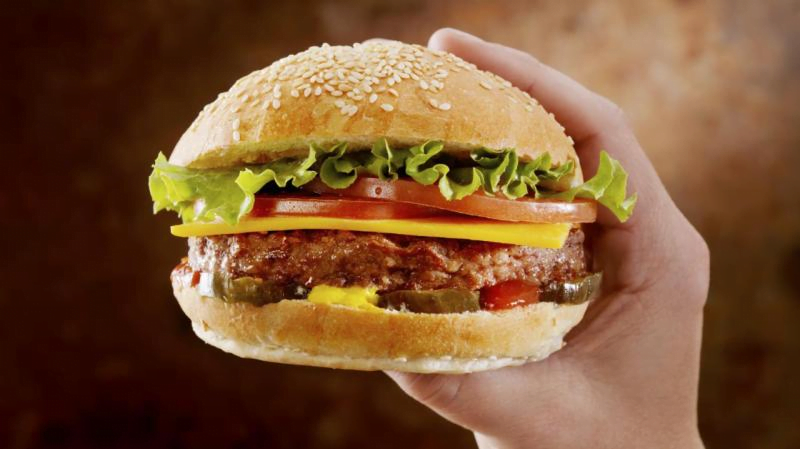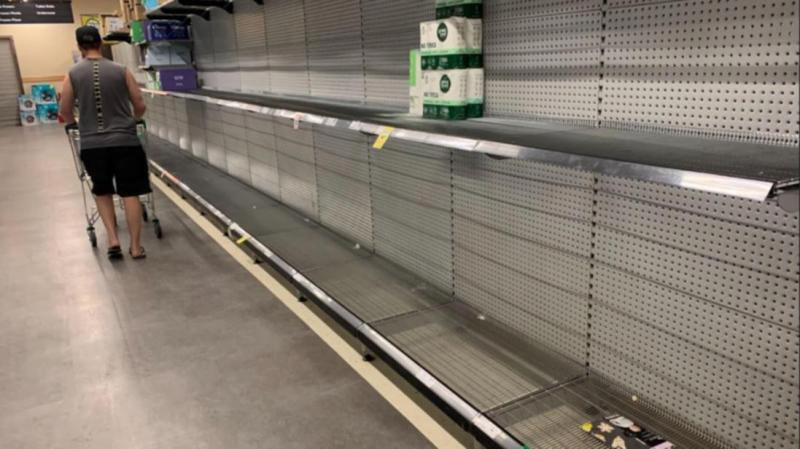Despite advances in technology and infrastructure, transport supply chains have begun to face new challenges in getting groceries to consumers.
KEY POINTS:
- Flooding in Western Australia is expected to keep roads closed in parts of the Kimberley for almost another week.
- A road transport industry head says interruptions to freight operations due to extreme weather events are becoming more frequent.
- Cold storage warehouses and the creation of more national highways have been put forward as ways to bolster the freight network.
Climate change used to feel like an invisible concept for many of us, but in recent years it has started to become more obvious in the day-to-day lives of Australians.
Reports have shown that climate change can affect crop yields and productivity in the agricultural sector but it is also starting to have an impact on the ability to transport items around Australia.
Flooding on a scale never seen before in the Kimberley region of Western Australia is expected to leave parts of the area cut off from the rest of the state for almost another week.
It has prompted some experts and industry groups to suggest more needs to be done to make freight transport networks in Australia more climate resilient.
Which areas have already been affected?
A 2013 study by the University of Queensland, which looked at the 2011 Rockhampton floods, considered why the community – cut off from the rest of the state by road for about two weeks – had been so highly vulnerable to food insecurity.
It found this was “due both to its reliance on long food supply chains that were disrupted due to loss of transport access and infrastructure, as well as to the relative lack of local, alternative, food distribution channels.”
While much of the ‘Black Summer bushfires’ in 2019-20 were centred in the eastern states of Australia, a massive bushfire along the Nullarbor Plain closed the only sealed road between South Australia and Western Australia for 12 days.
The closure caused huge interruptions to the supply of food items to the state.
Essential supplies being loaded onto a plane in Esperance on route to those who are stranded in Caiguna. #fb pic.twitter.com/xI9ywfjSPy
— Esperance Police (@EsperancePol) January 2, 2020
Climate interruptions
The Bureau of Meteorology reports on climate change annually in its State of the Climate Report.
It has linked flooding events in the country to the “trend towards high-intensity, short-duration rainfall events” and reported an increase in extreme fire weather.
Australian National University climate scientist Professor Mark Howden has previously told the Sydney Morning Herald public discussion about flood frequency, such as a one-in-100-year event “makes no sense in the changing climate”.
Cam Dumesny, CEO of Western Roads Federation, a road transport industry representative association, told SBS News interruptions to freight operations due to extreme weather events were becoming “more frequent”.
So, what impact can these weather events have on supply chains?

The movement of groceries
Most states produce fresh produce to meet the basic needs of their consumers. In order to give consumers broader choice, produce brought in from other states is often transported by trucks.
Internationally produced products are mostly distributed via Sydney or Melbourne (less often via Brisbane) after coming through those city ports. It is trained or trucked throughout the country, along with Australian packaged and processed foods.
Most groceries in Australia make their way to stores on trucks, some of which are refrigerated.
The most susceptible routes
Liz Jackson, Associate Professor in supply chain logistics at Curtin University, said WA is the most susceptible of the Australian states and territories to supply chain interruptions due to climate affects.
“Western Australia is about the end of the line when it comes to, even the global freight link, the idea that we have one road and one railway line for all intents and purposes out [of Perth] is pretty worrying,” she told SBS News.
Ms Jackson said additional costs incurred by having to find ways of bringing in food to places dealing with natural disasters would inevitably reach consumers.
“Whether they’re passed onto the consumer in the form of grocery bills, or whether it’s in the form of increases to insurance, or whether it’s in the increase in our council rates, somehow they are passed on,” she said.
Building resilience in the network
Ms Jackson and Mr Dumesny agreed that one way to decrease the impact of climate interruptions on food supplies was by having cold storage warehouse facilities in more parts of the country.
They both suggested such a facility near Broome would have taken some of the strain off freight networks responding to the current flooding in the Kimberley region.
“Supply chains are all about flows – flows of product – and the minute there is a disruption to a flow, that is a big issue. We can fix this with inventory essentially better spread out over the nation,” Ms Jackson said.
She said such projects would usually be funded by state or federal governments, with private companies coming in once they were built and they could be made available for use as required.
Ms Jackson suggested locations of such facilities could be determined through looking at future modelling of natural disaster risks.
Mr Dumesny said investment in transport networks across the country should be looked at as a nation-building project.
He said currently, different modes of freight were considered separately but the big picture needed to be looked at.
The effects of road closure in out town. Fitzroy bridge damage is substantial. Impact on tourism could be even worse. And food is now important and valuable. Thank goodness ORDCO is organising and has all our Ag input need’s organised. pic.twitter.com/2sif87rF1m
— Fritz Bolten (@BoltenFritz) January 8, 2023
“Freight drivers, sea, rail and air – you need all four modes in this country working as a symphony, not a cacophony. And the problem is government policy is mode specific,” he said.
Mr Dumesny said sea freight was almost non-existent around Australia, air freight was too expensive and rail routes were even more limited than roads.
He said additional national highways connecting states would also provide alternate routes across Australia.
Work to seal sections of the Great Central Road – a dirt road running through the Northern Territory from central Queensland to WA – has begun. But Mr Dumesny said it was going at “a snails pace” and needed to be made a priority and fast tracked.
He said the estimated cost of the project would have benefits beyond freight and would be worth it.
“We’re talking about spending $3 billion to basically seal and upgrade a 1500-kilometre network that actually opens up a nation,” Mr Dumesny said.
A review into the resilience of Australia’s road and rail supply chains was undertaken by the federal government in 2022.
Within the terms of reference, it was expected to consider key risks including “weather events or natural disasters”.
A spokesperson for the Department of Infrastructure, Transport, Regional Development, Communications and the Arts said while a final draft of the report from the review has been completed, it is “undergoing review” and they were unable to advise of a public release date.
Last November, Minister for Infrastructure, Transport, Regional Development, Communication and the Arts Catherine King announced the department had established a new unit to identify how it could work “to help achieve net zero and improve the resilience of our transport networks and supply chains in the face of increasing extreme weather events.”
The ‘Net Zero Unit’ will support the cross-portfolio Net Zero Taskforce that will advise the government.
Extracted from SBS


